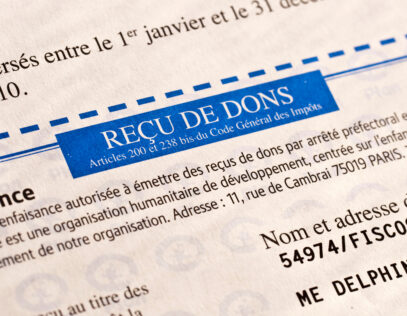For multinational enterprises (MNEs), the last several years have been transformative on almost every level. In the wake of the Covid-related turbulence, many are contemplating significant cross-border transactions or bringing new products or services to the market. Regulators are sharing information as never before. And data technologies like AI and automation continue to evolve at a breakneck pace.
The convergence of these dramatic developments is sparking new risks—and new demands from tax authorities. Meanwhile many tax departments are struggling to stay adequately staffed. That’s a big challenge: a recent survey shows that under-resourced companies are more likely to face audits. Last year, six in 10 businesses were audited, and 40% had to pay penalties. And the risk of controversies with global tax authorities isn’t going away: eight in 10 senior tax leaders expect both the number and intensity of the audits they’ll face will actually increase in the coming years.
As they’ve grown, some MNEs have sought out local external providers to help fill in the gaps. Others have turned to multinational consultants with a plethora of local experts on hand in each jurisdiction. While these solutions have had their purpose, the patchwork model has created complications for parent companies aiming for a unified and effective global tax strategy. So, what is a corporate taxpayer to do?
BEPS, CBCR, BEPS 2.0: A Transfer Pricing Alphabet Soup
Companies have been globalizing for decades. Now, tax authorities are
“globalizing,” too—cooperating and exchanging intimate corporate information with their cross-border counterparts as never before. With public opinion at their back—and significant shortfalls in their post-Covid coffers—these regulators have grown more sophisticated and assertive: they are requesting more (and more detailed) information from taxpayers than ever before, often on extremely short timelines. Real-time reporting and systems-level compliance are on the horizon in several countries.
This more aggressive stance is driven in part by the OECD’s Base Erosion and Profit Sharing (BEPS) framework, aimed at combating profit-shifting, and bringing more transparency and tax fairness to reporting. Two BEPS provisions in particular are reshaping the landscape of transfer pricing for qualifying large MNEs, bringing significant new complexity and compliance risks.
Country-by-Country Reporting (CbCR) requires MNEs to provide detailed information on all their global operations—including income, taxes paid, and economic activities—in each jurisdiction. While this granular data is meant to be shared only among tax authorities for transfer pricing and BEPS risk assessments, demands for public disclosure are growing: the EU has already adopted legislation, and more countries are likely to follow suit.
Pillar Two, one half of the so-called “BEPS 2.0” reform package, augurs sweeping change for MNEs: a requirement that they pay a minimum 15% tax on their global income, regardless of where they operate. As of January 2024, 36 countries (including all 26 EU member states, the UK, Japan and Korea) have enshrined the 15% tax floor in their legislation—and more will follow. The rules look at the company’s effective tax rate (ETR) on a country-by-country basis. Since different jurisdictions may interpret those rules differently, issues around allocation of profits, intercompany transactions, and tax incentives may cause cross-border tax controversies or double taxation. With BEPS’ focus on aligning profits with substance, MNEs will likely face increased scrutiny regarding the economic substance of their operations: transfer pricing arrangements must fully reflect those economic realities.
Too Many Cooks in the Kitchen?
It’s clear that companies with far-flung operations need some kind of standardization in their compliance processes: a coherent platform that can help mitigate inconsistencies, inefficiencies, and tax controversies. The only question is, how do you get there?
Let’s say your company has expanded rapidly into international markets, driven by strong demand for its products or services, or has been part of a major acquisition. You may end up with a decentralized business model, with multiple subsidiaries and business units, each with its own tax department or service providers—and each with its own interpretation of the MNE’s policies, standards, and strategy in the context of local regulations. Further complicating matters: the company’s ERP/GL may not have broken out all relevant items for reporting. This puts an additional burden on the tax department: to manually go back into the detail journal vouchers and parse out and categorize the relevant information needed for reporting. And let’s not forget that tax authorities regularly change the required disclosures on compliance forms—once again, requiring significant manual work on the part of the tax department.
Having too many service providers in your business ecosystem can at best weigh down your processing time and expense, and at worst lead to serious complications, like inconsistencies in documentation and compliance—classic regulatory red flags.
Tax directors need simplicity and visibility in executing their tax policy, without sacrificing quality and control. That’s a tough ask when so much organizational bandwidth is devoted to coordinating different offices, cultures, reporting formats, deadlines, and accounting standards. (And let’s face it: most tax professionals don’t fantasize about spending their professional career preparing TP documentation across dozens of different entities and jurisdictions.)
Conflicting Priorities
Many MNEs turn to accounting firms to leverage their global platforms as a
kind of “shadow tax function”—but not all are finding that the efficiency gains of the scaling-via-outsourcing model outweigh the costs.
Despite the advantages these firms can offer—a global footprint and connections at the home-office level—they aren’t always the right fit for a global enterprise with complex operations who need to stay laser-focused on their overarching business and tax strategy in a globalized compliance environment.
National offices of global firms often grapple with internal and localized issues that may conflict with that larger strategy. Operating in specific markets with unique competitive realities, some may prioritize their relationships with subsidiaries, potentially neglecting the needs of the distant parent company. Internal competition among national member firms can hinder a balanced approach to the MNE’s global transfer pricing strategy. Conflicts may arise if these firms offer services beyond tax compliance, impacting the objectivity of their advice.
These circumstances collectively pose a risk of distorting the big picture—including a consistent narrative—which the home tax department needs to optimize its global tax and transfer pricing strategy.
Quality, Visibility, Control: Why a Centralized Solution Makes Sense
Fortunately, there’s an alternative, which more and more companies are adopting: a software-based, cloud-hosted centralized compliance solution.
MNEs have been centralizing certain tax and accounting processes for some time—at least in the domain of indirect tax, where the cross-jurisdictional complexities of VAT and similar taxes are perfect candidates for a consolidated solution. Increasingly companies are using it to optimize tax reporting and transfer pricing documentation. Some are even centralizing their statutory accounts and tax returns, in anticipation of an anticipated systems-level compliance culture.
It’s easy to see why. Not only are these solutions flexible—able to adapt to the regulatory landscapes in different jurisdictions—they deliver cost efficiencies through economies of scale, minimizing redundancies in processes and software, while ensuring efficient resource allocation.
As cloud-based solutions, they’re also scalable and adaptable: able to accommodate business growth and changes in compliance requirements. And they’re agnostic of geography and time zone: any authorized user has real-time access to compliance data from anywhere, facilitating collaboration and communication—and swift responses to emerging issues.
These systems streamline reporting processes while preserving the business’s ownership of its global compliance—pivotal for optimizing global transfer pricing strategy and maintaining a consistent narrative. And, if no significant structural changes have happened during the year, the automated solution can easily roll forward the narrative into next year.
Finding Your Compliance Sweet Spot: Global Control, Local Expertise
Transfer pricing is a complex, continuous process, requiring meticulous attention to detail—without losing sight of the bigger picture. When both risk mitigation and simplicity are priorities, centralized compliance should be an obvious choice.
But in the rush to globalize your processes, it’s crucial not to overlook localized risks.
In a successful centralized compliance solution, the company adheres to uniform global policies and procedures, ensuring compliance with consistent standards and regulations worldwide, while accounting for the geographic, legal, and cultural idiosyncrasies of each jurisdiction and each tax authority. Those local business and regulatory norms play a pivotal role in understanding tax authorities’ expectations and proclivities. They’re also key to identifying regional benchmarks for your transfer pricing strategy—information which is seamlessly integrated into centralization software and standardized in documentation.
Centralized systems shine not only in streamlining reporting processes but also in offering a comprehensive view of global compliance. Cloud-based functionality enables real-time access to compliance data from anywhere, facilitating swift responses to emerging issues and empowering decision-makers with timely and accurate information.
Here’s a rulebook to follow: centralize your software and processes, localize your policies and controls—and keep the lines of communication open in both directions. Set specific thresholds at which an audit or tax issue should escalated to the central team.
When your processes are standardized, documentation is consistent, and cloud-based reports are at your fingertips—without the hassle of coordinating with local teams across different time zones—you not only stay ahead of global tax risk, you also create space to add strategic value to your business.
Having all relevant information, forms, processes, and documentation up to date, secure, and accessible in real-time from any office worldwide places you in an ideal position to shape your narrative—both across the entire group and in every entity. You’re better able to keep your eye on the ball for significant issues like your effective tax rate, transfer pricing strategy, and, of course, your reputation. And you’re on solid footing for next year’s work, next year’s challenges, and next year’s opportunities.








